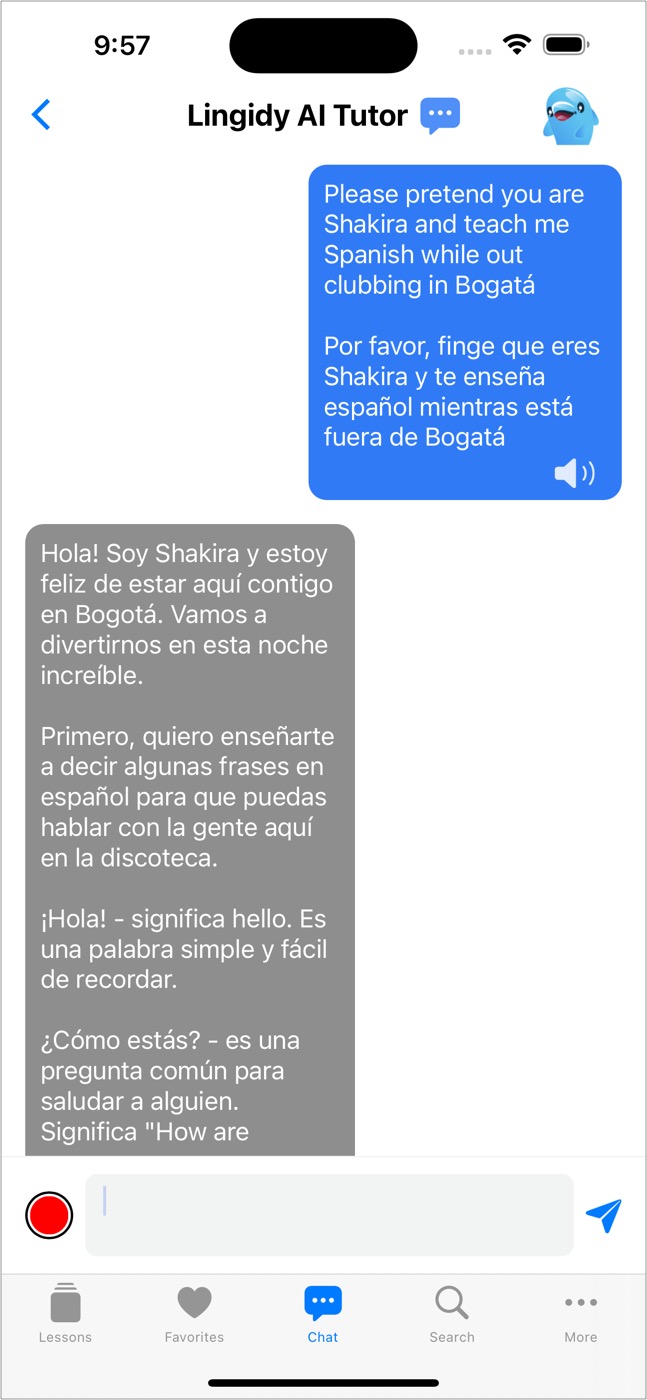Best Ways to Learn Spanish
Learn Spanish in Weeks instead of Months with these Fun Techniques

Learning a new language is always a worthwhile challenge. Not only does it improve overall brain function, but language is often tied to a population’s fascinating history and culture just waiting to be discovered. In fact, each different language you speak opens the door to another corner of the world that you can suddenly communicate with and understand. When you look at it that way, who wouldn’t want to learn a new language?
Spanish is among the most-spoken languages around the world with more than 486 million native speakers, according to Wikipedia. When you factor in non-native Spanish speakers (about 74 million), it’s the fourth most-spoken language worldwide behind English, Mandarin, and Hindi. With Spanish as the official language in 20 countries, it’s quite a useful language to know.
If you’re traveling anywhere in Central America, South America, or across the pond to Spain, it’s a good idea to at least get familiar with the basics. It’ll probably even help you to master the language if you live in the US near large Spanish-speaking communities. In fact, according to estimates, the US will be the second-largest Spanish-speaking country in the world behind Mexico by the year 2060.
Clearly, there are many reasons to learn Spanish. But learning a new language can be daunting, especially if you’re not sure where to start. Thanks to technology and travel, there are so many modes of study available nowadays. All you have to do is find the one that works best for you and get started.
So are you looking for the best ways to learn Spanish? Let’s dive into the fastest, most effective, and most popular ways to learn this widely-spoken Romance language.
Travel to Spanish-Speaking Countries
This will seem like an obvious one, but one of the best ways to learn Spanish is to travel to a country where everyone speaks it. Head on down to Mexico or across the pond to Spain to be fully immersed in the language. After all, immersion is one of the best language-learning techniques. Since it may be difficult to get around without Spanish in certain places, this may be best suited for advanced learners, but beginners shouldn’t be afraid to try!
Traveling to Spanish-speaking countries in order to learn the language creates a sense of urgency in which you really have no choice but to use it. It also gives you plenty of opportunities to interact with native Spanish speakers, which probably isn’t something you normally get in your hometown.
When you’re constantly hearing native Spanish, you have to shop in Spanish, and otherwise interact with locals in Spanish, you may even start to think in Spanish yourself. Making it a large part of your daily life will force you to pick up the language in no time.
And one of the best things about traveling to Spanish-speaking countries is the satisfaction you feel when you successfully navigate an interaction in Spanish. It’ll be so rewarding to see all your hard work paying off in real time, and the locals will also be friendlier when they see you’re making an effort.
Use Mobile Apps
Apps on your phone are another way for you to start learning Spanish. Most of us carry our phones pretty much everywhere, and you’re probably no exception. If you download a language-learning mobile app, you’ll have tons of ways to learn Spanish right at your fingertips.
Talking with native speakers of the language you are trying to learn is one of the best ways to learn a language. But what if you don't have the time or money to travel to another country? There's an app for that. Actually, several apps.
Hello Talk, Tandem and HiNative are three apps that allow you to meet people from around the world to practice your language skills. If you are a native English speaker from Duluth, North Dakota, you probably won't meet a lot of native-Spanish speakers. But if you have one of the afore mentioned apps, you can connect with them online and help them learn English, in return for teaching your Spanish.
 Artificial Intelligence (AI) has the potential to revolutionize language learning. New technologies such as ChatGPT are allowing companies to develop intelligent virtual tutors that can converse with you and even correct you if you make a mistake.
Artificial Intelligence (AI) has the potential to revolutionize language learning. New technologies such as ChatGPT are allowing companies to develop intelligent virtual tutors that can converse with you and even correct you if you make a mistake.
Lingidy was the first language-learning app to provide an AI Tutor that makes learning Spanish fun and interactive. You can ask Lingidy’s AI Tutor things like, “Pretend you are Shakira and teach me Spanish while we’re out out clubbing Bogatá”. Or “Pretend you are Ricky Martin and teach me Spanish by writing a song for me.” Or “Pretend you are Sofia Vergara and tell me what you like best about me in Spanish”, lol.
With Lingidy, you can even ask celebrity or historical figure avatars to correct you when you make mistakes. And Vidalingua is working with Applied AI to provide celebrity voices, AI generative images, video and voice recognition to give you a completely immersive experience. You’ll be the star of your own movie but you’ll know Spanish when the film is over.
Rumor has it, they are working no removing ChatGPT’s restriction on flirtatious banter 😘 You know how people say the fastest way to learn Italian is to have an Italian boyfriend? Well get ready, because your own Virtual Valentino is on the way, or Valentia or Valentix. And you can get them on your phone even quicker if you download Lingidy for free from the App Store. Then consider subscribing, so they’ll have the financial resources to accelerate development and licensing of celebrity voices and likenesses.
Another app you may find useful is Spanish Translator + by Vidalingua. Translators are a must-have category of app because they provide real-time translations, when and where you need them. If you are at a restaurant and you want to know what wine pairs well with the fish, chances are you won’t have learned that in a lesson-based app like Duolingo, Babbel or Rosetta Stone. But you can use a translator to get the phrase ready before your waiter gets back to take your order, and you can even translate his response by asking him to speak it into the app.
Machine Translators like Google or Bing can be helpful, but as any language teacher will tell you, they aren’t perfect. In fact, they can make some pretty hilarious mistakes. That’s why it’s important to get a translator that is specific to the language you are learning like Spanish Transaltor + by Vidalingua. Spanish Transaltor + provides on-the-fly translations, even offline which is important when you are traveling. But it has features no other generic translators can match, like a comprehensive Spanish English dictionary with noun gender, part of speech and lots of usage examples. Spanish Transaltor + also provides millions of verb conjugations which is critical if you want to master Spanish. You’ll also find flashcards and multiple choices quizzes to extend your vocabulary. And best of all, you can download it for free from the App Store or Google Play.
Listen to Podcasts in Spanish
Our first mode of learning Spanish is perfect for those who are just starting out or who may not have time to commit to a more intensive method of study. As with learning any language, a good first step is always exposure. You want to hear that language as much as possible and get used to the way it sounds when it’s spoken by a native speaker.
Listening to a Spanish podcast is a great way to do this. If you’re a true beginner, it may be a good idea to search for podcasts specifically targeted towards Spanish language learners. You can also opt for podcasts geared towards young children. With these types of podcasts, the vocabulary used will be simpler and the host will be speaking more slowly and clearly.
Once you’re comfortable with the beginner podcasts, you can start searching for more intermediate or advanced ones. These will have a more difficult vocabulary and the hosts will be speaking at a quicker and more natural speed.
If you’re really looking for a challenge, steer away from podcasts geared towards learners and switch to ones Spanish native speakers listen to on a daily basis. If you want to get a more authentic experience, you could even try listening to a Spanish radio station.
No matter which level of Spanish podcast you choose, it’s very likely that you’ll pick up new vocabulary along the way. For added support, look for a podcast that provides a transcription so you can read along as you listen.
This is the perfect way for busy people to start learning Spanish, as you can listen virtually anywhere. Listen to your Spanish podcasts on your commute to work, while you work out, while you’re cooking, or while you’re doing laundry. By using your downtime effectively to expose yourself to spoken Spanish, you’ll notice an uptick in your skills in no time.
Listen to Spanish Music

This is similar to listening to Spanish podcasts, but with a fun twist. It’s been proven that giving a rhythm or a melody to something helps us remember things better, so why not discover some Spanish music? If you find a few songs that you really like, look up the lyrics and try singing along.
This is also a great way to learn new grammar structures and Spanish slang terms that you may not discover in a traditional class. Music uses more conversational language than you’re typically taught in formal texts, so it’s the perfect way to diversify your knowledge.
Not only will you learn the language this way, but you’ll also be learning about Spanish culture. Spanish and Latin music have a certain flair, along with a fascinating history that you’ll enjoy experiencing.
Watch Movies or TV Shows in Spanish
Similar to listening to podcasts, you can consume visual media in the Spanish language as part of your learning process. Many non-native English speakers will even tell you they learned English just by watching American TV when they were little. Who says you can’t do the same with Spanish?
If you’re looking for a slow start, choose one of your favorite TV shows or movies, ideally one you’re familiar with and have seen several times. There are a few ways you can customize the learning experience with visual media. First, you can throw yourself right in by simply switching the movie or TV show into Spanish dubbing. Or, you could watch it in English, but add Spanish subtitles so you can read along. Finally, you can combine the two and use both Spanish dubbing and either English or Spanish subtitles.
If you’re confident in your skills and want to challenge yourself, go straight to original TV shows from Spain or another Spanish-speaking country. Ideally, these are things you’ve never seen before so you really have to concentrate, and as a bonus, it’s a good insight into Spanish culture. Until you’re fully comfortable, you may opt to stick with Spanish subtitles so you can read along.
Another added benefit to watching Spanish television or movies is that you’ll become more familiar with regional accents. For example, Spanish in Spain sounds a little different from Spanish in Mexico, and so on. Becoming familiar with the nuances and differences between regions can greatly improve your grasp on the language.
Learn to Cook Spanish and Latin American Cuisine

Another fun way to learn the Spanish language and culture at the same time is to cook a new dish. We all have to eat anyway, right? So, do some research on dishes from Spain and Latin America find ones you’d like to try. Bonus points if you write your shopping list for the grocery store in Spanish.
Once you’ve acquired what you need, it’s time to start cooking. Follow the recipe in Spanish and try your hand at making the authentic dish you’ve chosen. Food vocabulary and the grammar of instructions are some of the most important things you can learn in a new language. After all, you’ll need these skills to potentially follow directions from authorities in Spanish-speaking countries. And food vocabulary is important because, well, we all need food to live.
And if you’ve never cooked Spanish food before, you’ve likely also learned a new cooking technique to carry over into other recipes. Learning while eating delicious food? It’s a win-win.
Traditional Spanish Courses
This one may seem fairly obvious, but that’s because it’s tried and true: one of the best ways to learn Spanish is through a traditional classroom setting. Group Spanish courses will give you the opportunity to interact with other learners so you can help each other and learn from each other’s mistakes.
This also has the added bonus of the instructor being able to correct your grammar and pronunciation as you progress. The other methods we’ve mentioned so far are perfect for those who don’t have time for a course. However, it can be difficult to learn on your own without someone who can correct your mistakes in real time.
This is also one of the best ways to improve your speaking skills in Spanish. Learning independently is great, but a lot of that is done by listening, writing, reading. You rarely have the opportunity to speak when you’re practicing alone as opposed to in a group course.
In a traditional Spanish courses, you’ll experience repetition, correction by an expert, memorable activities, and homework and tests that require you to practice and study. These exams and assessments, along with being in a group setting, can provide that extra motivation that you need to study on a regular basis.
Spanish Language Tutoring
If group classes aren’t really your thing, you can always opt for a more individual approach. Hiring a private Spanish tutor can do wonders to maximize your learning of the Spanish language.
A private course with a language tutor can make you feel more comfortable if you’re just starting out, and your Spanish tutor can customize lessons to suit your learning style. Another advantage of a private tutor is that you won’t be held back by other students in the class. And on the other hand, you can speak up more easily if you get stuck on something and need to spend more time on that particular subject. This means you can truly move at your own pace without having to worry about hindering or rushing other students.
In addition, a tutor will likely ask about your goals for learning the Spanish language. If you need an intensive course or only want to focus on improving one aspect of your skills, your tutor will do their best to meet your needs.
Another advantage of having a private Spanish tutor is that you get to set the schedule. It’s much easier to work with one other person to set lesson times than with an entire class of people. And if there are no tutors available in your area, you can always search online via an app or tutoring website.
Language Meetups

If you’re interested in learning in a group setting but not in the structure of a classroom, the best way to learn Spanish might be through a language exchange. You can use apps like Meetup or Facebook to find more casual Spanish language meetups in your area.
At a language meetup, you’ll mix and mingle with both native Spanish speakers and other Spanish language learners. The way this works is simple: you’ll speak in English for some time and give pointers to the non-native English speakers. Then, you’ll switch and they’ll do the same for you in Spanish. During these conversations, you’ll also likely make new friends and learn about Spanish culture, so it doesn’t even feel like studying.
Since they’re mainly conversation-based, though, language exchanges may be difficult for true beginners to just jump in and start speaking. As a result, this method of learning may be best suited for those who are already at an intermediate speaking level with the Spanish language.
Textbooks
Similar to a traditional classroom approach, you may want to get your hands on a traditional Spanish textbook. We realize this is certainly not the most fun method of learning, but it truly can be one of the best. And it doesn’t have to be your main method either; you can use the textbook simply as a supplement to the other ways you’re learning Spanish.
Whether it’s an online textbook or a hard copy, it can help you to write out the exercises by hand to increase your memory retention. This can be especially helpful for things like Spanish verb conjugations, one of the most challenging aspects of language to master. Even if it’s just a simple exercise of 10 questions per day, you’ll soon start to see a difference in your understanding of the Spanish language.
Use Flashcards
It’s hard to speak a language if you don’t know any vocabulary! This is where most people prefer to start when they learn Spanish. You should get the basics down first, such as “hello”, “goodbye”, “thank you”, and the like, and build up from there. The best way to learn vocabulary like this is to use repetition. Consequently, one of the best ways to incorporate repetition into your studying is to use flashcards.
Some people prefer to make their flashcards by hand, and it’s true that there is some value in writing them by hand as opposed to typing. If you’re going to handwrite your flashcards, you may also consider using colored paper to aid your memory. It’s been proven that associating a color with a word can help us to remember it better.
Most of us, however, don’t have time to make flashcards by hand or even if we do, they’re inconvenient to carry around. That’s why a lot of people prefer to use flashcards on their phones. There are tons of apps you can download, but one of the best ways to learn Spanish is to use the flashcards on Spanish Dictionary + by Vidalingua. This app has dozens of flashcards premade that you can practice with, mark as favorites, and repeat. And the more you repeat them, the faster you’ll be speaking with your new vocab!
Read Books in Spanish
Reading has been proven to be one of the best ways to learn a language. This is true even for young children. The more you read as a child, the quicker your writing skills develop and your overall mastery of the language improves. If this is true for a kid learning their mother tongue, why would it be any different when you’re learning a second language?
If you’re truly a beginner, start with children’s books written in Spanish. If you’re already at an intermediate level, pick up a young adult fiction book or a short novel you’re already familiar with in Spanish. Reading something you’ve already read before in a different language gives you the advantage of knowing what to expect. This makes it easier for you to follow along and infer vocabulary through the context of what you already know.
Advanced Spanish learners may be ready for completely new material, such as longer novels or nonfiction books, to challenge their vocabulary and increase their confidence.
Carry a Spanish-English Dictionary
Another way to learn vocabulary for everyday use is to carry a Spanish-English dictionary while you’re out and about. This way, when you encounter a new situation, you can look up new words and phrases that you’re curious about.
But again, we encounter the problem of a dictionary not being an easy or convenient thing to carry around. Well, Spanish Dictionary + mobile app can solve this issue. This offline dictionary app can help you look up virtually any word, whether you’re trying to learn before you travel or you’re already on the go.
Spanish Dictionary + not only enables you to look up new words, but it also will give you full verb conjugations as well as lists of phrases that might be useful in different situations, such as greetings, at the shop, or at the bar. If you’re able to look things up on the go and use them immediately, it will also reinforce these words in your memory more quickly.
Read the News in Spanish

Reading the news in Spanish can be a great way to learn the language in a real-time setting, especially if you’ve got the basics down. Reading short news articles will not only improve your reading comprehension skills, but it’ll also teach you how to talk about current events in Spanish. After all, current affairs around the world are some of the most common topics of conversation.
It’s a good idea to keep a dictionary or mobile app on hand as you read, such as Spanish Dictionary +, so you can look up anything you don’t understand. If you use this app on an iPad you can simply drag and drop words from an article into the Spanish English Dictionary to look them up. You may even want to add new flashcards to your deck, by selecting them as favorites in the app, as you read the news.
Journal in Spanish
Not only is this one of the best ways to learn Spanish, but it’s also one of the best ways to keep track of your own progress. No matter what level you are, try to write a few sentences per day in Spanish.
These don’t have to be long journal entries, especially if you’re a beginner. All you have to do is sit down at the end of each day and write 5 sentences about your day in Spanish. After a few weeks of doing this consistently, you might notice that 5 sentences has become easy, so you can increase your goal to 10 sentences.
As you keep writing and increasing your goals with time, you’ll have a visual record of the progress you’ve made. At the same time, you’re improving your writing skills, which is one of the hardest parts of learning a new language.
If you’re not sure if what you’ve written is correct, you can always ask a native Spanish speaker to look it over. If you don’t know one, you can plug your journal entry into the Spanish Translator+ mobile app to double check yourself.
After a few months of journaling in Spanish, you’ll be shocked at how far you’ve come in such a short period of time.
Switch your Phone’s Language to Spanish
This one might be painful at first, especially if you’re a beginner. You use your phone every day for almost everything, whether it’s looking at photos, texting, writing emails, or playing games during your downtime. So, one of the best ways to learn Spanish is to change your phone into the Spanish language.
This way, you’ll be forced to figure out where your everyday apps are and how to navigate your device in the Spanish language. It’s a form of forced learning that may be inconvenient at first, but it’ll make a difference in your capabilities quite quickly. Since you know your way around your phone, seeing the Spanish words that correlate to what you already use instills the vocab in your memory without you even noticing.
Conclusion
As you can see, there are tons of ways to learn a new language, but these are by far the best ways to learn Spanish. And better yet if you’re able to combine some of these methods to make your process more enjoyable and effective. Once you master the Spanish language, you’ll be ready to converse with native speakers in no time. Happy studying!

Brittany Muldoon
Prague, Czech Republic
Creative Video Editor at Picasso Film
More Articles about Learning Languages

Easiest Languages to Learn
With a new language comes new opportunities, new friends and an increased ability to connect with people from other cultures.

Say I Love You
One of the first things we want to learn when discovering a new language is how to say I love you.

Romance Languages
Are Romance languages the most romantic languages or the languages of love? Not exactly. Fine out why...
Have you written an article that we should feature in the section above? Email info@vidalingua.com with a link to your article and an explanation of why it would interest our readers.
